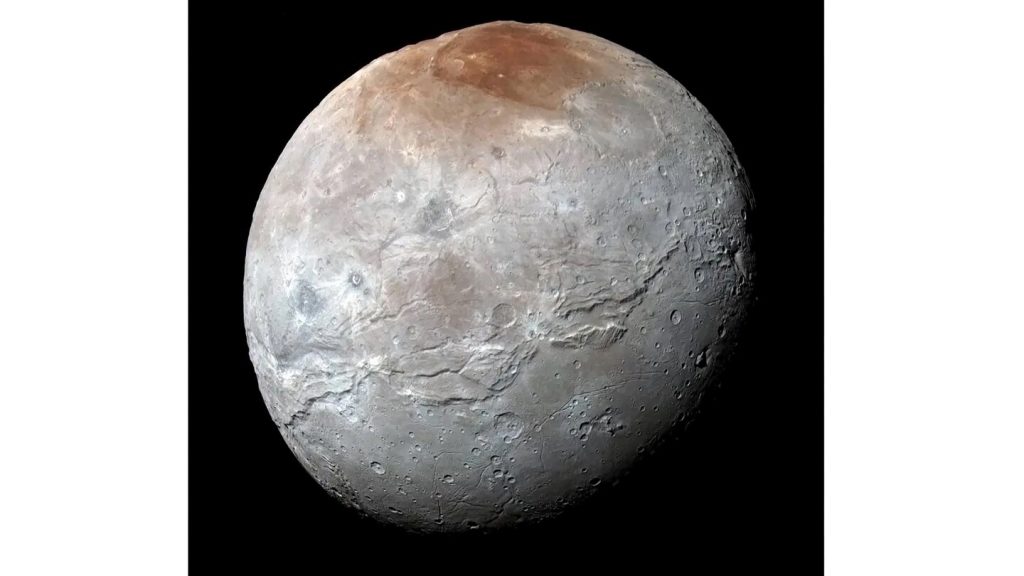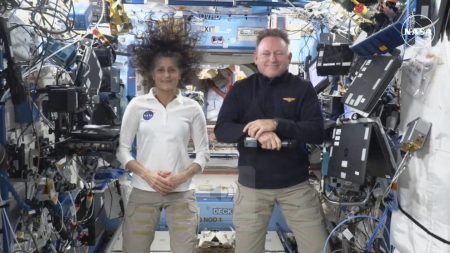NASA’s Webb Space Telescope has made a groundbreaking discovery regarding Charon, Pluto’s largest moon, shedding light on its surface composition by detecting traces of carbon dioxide and hydrogen peroxide. Previously, during the 2015 flyby by NASA’s New Horizons spacecraft, scientists identified a predominant coating of water ice on Charon but were constrained in their ability to detect more elusive chemicals. The advanced capabilities of the Webb Space Telescope allow for the observation of certain infrared wavelengths, facilitating the identification of these additional compounds. Carly Howett, a scientist associated with the New Horizons mission, emphasized the significance of this breakthrough as it unveils chemical signatures that were previously undetectable.
Charon, which is approximately half the size of Pluto, is located in the far reaches of the solar system, specifically in the Kuiper Belt, a region beyond Neptune filled with numerous small celestial bodies. Together, Pluto and its moons, including Charon, reside over three billion miles away from the sun, making it an environment unlikely to support any form of life due to extremely low temperatures. Prior analyses had already indicated the presence of ammonia and organic materials, but the recent findings of hydrogen peroxide and carbon dioxide are particularly noteworthy. They provide insights into the complex chemical interactions that occur in such distant and frigid conditions.
The presence of hydrogen peroxide on Charon is believed to have originated from radiation-induced processes affecting water molecules on the moon’s surface. Research from Silvia Protopapa, a co-author of the study published in the journal Nature Communications, suggests that this hydrogen peroxide may be formed when water is subjected to radiation, promoting chemical reactions that lead to the accumulation of this compound. Similarly, the detection of carbon dioxide is hypothesized to result from impacts that might unleash this gas from beneath the surface, further contributing to the moon’s chemical diversity.
Understanding the origins and behaviors of these compounds on Charon is crucial for scientists pursuing a deeper comprehension of celestial bodies in the Kuiper Belt. The findings from the Webb Space Telescope not only enhance our knowledge of Charon but also offer valuable clues about the formation and evolution of other moons and planets in similar distant environments. The ability to discern such chemicals can aid in piecing together the historical and geological narratives of these celestial bodies, potentially unveiling details about their composition and the processes that shaped them over billions of years.
Moreover, the significance of this research extends beyond Charon itself, as the methodologies and findings can be applied to other celestial development in distant regions. The Webb Space Telescope’s advanced infrared capabilities represent a leap in our observational prowess, allowing scientists to detect and analyze chemical signatures in places that were previously believed to be too remote or inhospitable for detailed study. This dedication to exploring the distant reaches of our solar system exemplifies the ongoing quest to understand the mechanisms that govern both familiar and foreign worlds within our universe.
In conclusion, the recent discoveries made by NASA’s Webb Space Telescope concerning Charon reveal a complex and chemically rich surface that enhances our understanding of the moon and its geological history. The detection of hydrogen peroxide and carbon dioxide marks a significant advancement in planetary science and emphasizes the cutting-edge technology employed by the Webb mission. As researchers continue to analyze these findings, they not only contribute to ongoing studies of Pluto and Charon but also promote a broader exploration of the Kuiper Belt and beyond, paving the way for future discoveries in planetary composition and evolution.










